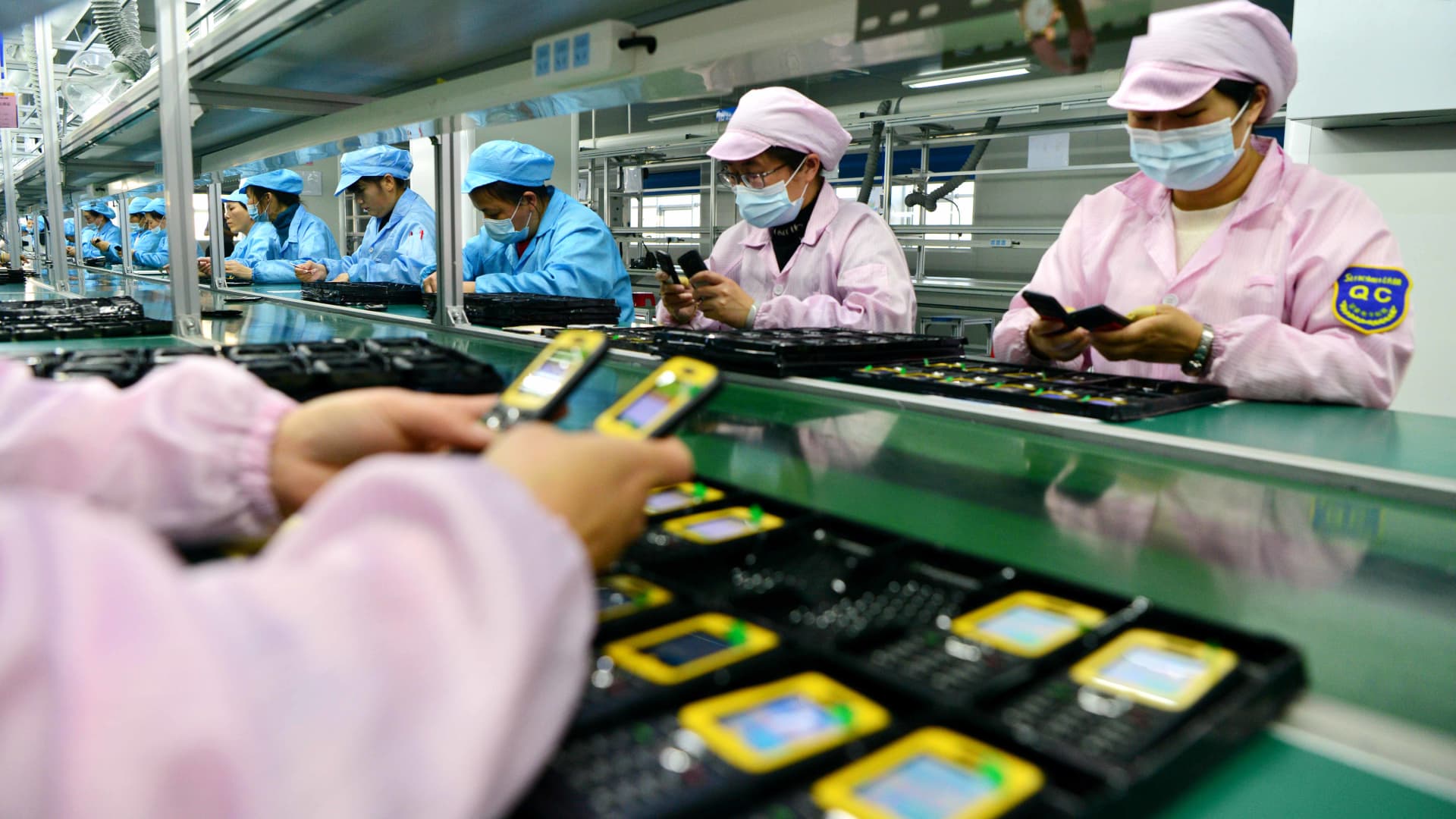BEIJING — For some factories in China, it’s not full steam ahead after the end of zero-Covid.
All the factories that U.S. toy maker Basic Fun works with in China — about 20 of them — told workers not to return immediately after the Lunar New Year holiday, said CEO Jay Foreman.
That’s because of a flood of inventory in the first half of last year, which didn’t get sold as consumer prices in the U.S. surged over the summer and into the fall, he said. Basic Fun’s products include Care Bears and Tonka Trucks.
The official Lunar New Year holiday in China ended Jan. 27, but the travel period runs until Feb. 15. The festival is typically the only time each year that migrant workers — more than 170 million people in China — can visit their hometowns.
“Every factory I spoke to said they’re going to have less people employed this year than last year,” Foreman said. He expects U.S. consumer demand to pick up later this year.
China’s exports to the U.S. in the toys, games and sports category account for about 6% of all exports to the country, according to China customs data accessed through Wind Information. That category of toy exports to the U.S. saw a slight drop in 2022, the data showed.
“Retail, anything consumer discretionary, they were hit quite hard. It was really a combination of high inventory and demand dropping quite a lot for the export markets,” said Johan Annell, partner at Asia Perspective, a consulting firm that works primarily with Northern European companies operating in East and Southeast Asia.
He said consumer electronics was seeing a similar situation.
“For other industries, the picture is much better. Some are struggling to keep up with trailing orders and catch up with everything they had to deliver last year,” he said.
China abruptly ended its zero-Covid policy in December. But restrictions on business activity were tight for most of 2022, including a lockdown of Shanghai for about two months in the spring.
U.S. demand slows
Retail sales in the U.S. — China’s largest trading partner on a single-country basis — have slowed in the last few months. China’s exports to the U.S. barely grew in 2022, and the U.S. economy is expected to slow further in 2023.
That’s on top of tariffs and bilateral tensions, which have escalated over the last several years.
“We expect we will continue to grow, but the pressure is very great,” Ryan Zhao, director of Jiangsu Green Willow Textile, said in Mandarin, translated by CNBC.
“What I heard about the market, 2023 will be very hard. U.S. demand is declining. The Russia-Ukraine war hasn’t ended.”
Some U.S. clients’ orders have disappeared.
Zhao said his company was working with a high-end bedding and textile brand in New York that filed for bankruptcy last year. To survive in the “shrinking” market, he said the company is shifting to lower-priced products popular with younger consumers.
That means in order to grow revenue, Zhao has to sell more items than before – and he plans in the next few months to hire 10 more workers locally for his factory of 30 people in China.
When asked by CNBC in January, China’s customs administration acknowledged the pressure on China’s exports from slowing external demand, and noted rising risks of a global recession.
Trade data show demand for Chinese goods is going up in other markets, such as Southeast Asia.
Since China’s Covid wave ended, employers have increased the share of part-time positions and manufacturers are increasingly paying workers every week, instead of once a month, according to Qingtuanshe, a job search platform within the Alipay mobile app.
While there’s no clear change in wages since the reopening, Qingtuanshe noted the pay range for factory jobs declined sharply during the pandemic.
Skills mismatch
For China’s domestic economy, the drop in overseas demand reveals a more widespread employment problem: lack of highly skilled factory workers.
“It’s generally becoming more difficult to find workers and to find the right workers,” Annell said.
“You have some high youth unemployment and there is a pool of labor, but when you start looking into it in a specific city, it’s hard to find both the qualified supervisors” and technical workers, he said.
Manufacturing accounts for 18% of China’s labor force, and construction workers another 11%, said Dan Wang, Shanghai-based chief economist at Hang Seng China. However, the majority only have at best a middle school education, making it hard for them to change to another industry, she added.
She expects there will be more than 1 million unemployed people in rural areas — who are not counted by official statistics on urban unemployment. She attributed it to the decline in exports and a push for automation in China, while the real estate sector’s demand for construction workers declines.
Lackluster growth in consumption also limits how much the services sector can absorb new workers, as it had prior to the pandemic, Wang said.
“It looks like the ultimate solution is still on some government-sponsored training. As time goes by, more of those workers need to be trained to actually earn a living.”
